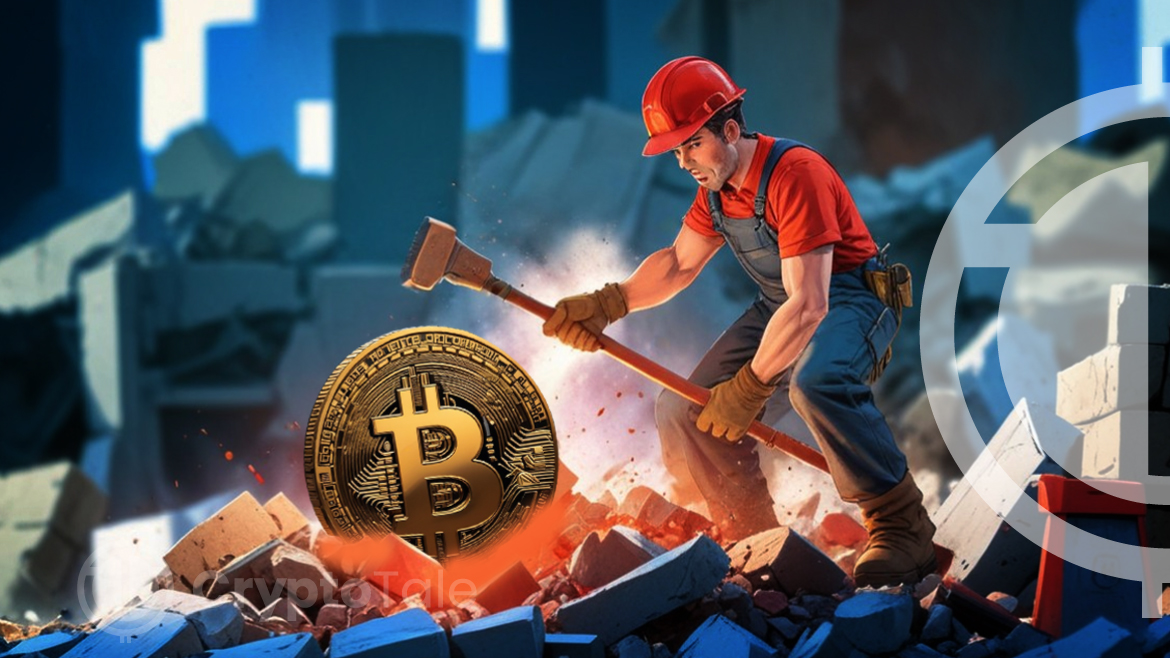
The journey to mine a single Bitcoin isn’t just about having a strong computational power. It also depends on other factors like hardware efficiency. In this article, you will learn about Bitcoin mining and the time it takes to mine one BTC.
What Is Bitcoin Mining?
Bitcoin mining is a complex technological process in which miners use their computational power to solve complex problems and validate transactions over the Bitcoin network. The term “mining” is derived from the finite supply of Bitcoins, in contrast to fiat currencies, where governments have the ability to print money indefinitely. Once the number is reached, Bitcoin mining is expected to cease. The miner who first solves the hash puzzles can verify the blocks and get block rewards.
How Long Does It Take To Mine One BTC?
The time it takes to mine one BTC can vary depending on the hardware used. On average, it takes 10 minutes to mine one BTC, and the miners would receive a reward of 3.125 BTC.
Calculating the time required to mine one BTC can be challenging due to variations in the miner’s hardware. Some miners might have dozens or hundreds of hardware equipment to increase their hash rate.
How Many Bitcoins Are Left to be Mined?
At the moment of composition, the total number of Bitcoins in supply has crossed 19 billion.
How Long Will It Take To Mine 1 Bitcoin Using a Computer?
According to a rough estimate, it would probably take 2 million years to mine 1 BTC using a regular PC. Please note that achieving this is contingent upon having a minimum hash rate of 500MH/s within the mining pool. While the average block generation time may appear to be 10 minutes, it’s essential to consider the substantial mining operations operating around the clock to secure and maintain the Bitcoin network. They can make 0.00000058 BTC a year if all conditions are perfect.
Factors Determining the Time Taken for Bitcoin Mining
1. Mining Hardware
Hardware is a very important part of mining Bitcoin because, without the right hardware, you can’t find the correct 64-digit hexadecimal hash that validates a block. Hashing requires computer hardware to go through trillions of hashes to find the correct hash.
So, to mine Bitcoins successfully, you will need to invest in Graphics Processing Units (GPUs), Field-Programmable Gate Arrays (FPGAs), or Application-Specific Integrated Circuits (ASICs). Bitcoin mining is an energy-intensive process, so ensure the hardware is energy-efficient and durable for continuous operations at full level.
Compared with GPU and FPGA, ASIC-based hardware is considered the most advanced and can create large amounts of hashes per second. Furthermore, most of Bitcoin’s mining networks are entirely made of ASIC mining farms. But such advanced hardware costs a lot.
2. Mining Pool
Miners can choose whether to mine solo or join pool mining. Mining solo would be hard without a lot of investment because of the difficulty in solving the hash. In pool mining, miners come together to form a group to deal with the difficulty of mining. It would be easy to mine Bitcoins and solve a block using combined computational power in the pool. In addition, each miner would get paid for their share of work.
When joining a mining pool, check its hash rate and reputation. Furthermore, thoroughly check whether the Bitcoin community trusts the pool because some mining pools claim to be legitimate, but they can be scams. So, when choosing a pool, try to select well-established crypto-mining applications like BTCC, Poolin, F2Pool, and more.
3. Mining Difficulty
To keep the rate of producing blocks more or less constant, the difficulty of mining is adjusted every 2,016 blocks. It is raised or lowered depending on the number of miners contributing to create the block. When there are more miners in the network, the difficulty will be raised appropriately, and when there are fewer miners, it will be lowered.
What Are the Types of Hardware Used in Bitcoin Mining?
Bitcoin mining requires multiple hardware to increase the hash power and mine Bitcoins without much difficulty. There are various hardware used in Bitcoin mining, and they are,
- GPU: Unlike the earliest used CPU hardware, GPU offers a better hash rate and can be used for gaming, video editing, and other purposes. The first software designed explicitly for GPU mining was launched in 2010.
- ASIC: It was launched in 2012 and is 200 times more effective than GPU hardware. The major downside is that it is costly, with prices ranging from $2,000 to $15,000, and the high energy costs that come with it make it a high-priced one.
- FPGA: Because of its cost efficiency and speed, FPGA hardware is much better than GPU and ASIC. It has a lot of hashing power and offers miners the flexibility to repurpose their setup for alternative mining activities or other tasks.
- Cloud Mining: It allows miners to rent cloud mining services to mine Bitcoins without investing and maintaining their own hardware. However, when choosing a cloud mining service, be cautious and choose a reputable one to avoid being scammed.
Limitations of Bitcoin Mining
Speed
The Bitcoin network processes 3 to 7 transactions per second and introduces one new block to the blockchain every 10 minutes. However, compared with others like Visa, a centralized system that handles 65,000 transactions per second, Bitcoin’s transaction speed is low.
Scalability
In blockchain, scalability refers to the network’s ability to handle large volumes of transactions more efficiently. The main reason behind this is that scalability is surrounded by decentralization and security, and any changes made to scalability will also affect the other two. For instance, to solve the scalability issues, if the Bitcoin blockchain was altered, it could have led to weakened security and centralization.
Energy Usage
One of the major issues with Bitcoin mining is the massive energy cost associated with it. Bitcoin uses a proof-of-work (PoW) consensus mechanism, which consumes much more energy than a proof-of-stake (PoS) mechanism. Based on certain estimates, the total energy spent on Bitcoin mining surpasses that of numerous countries.
Until 2021, Bitcoin mining was mostly concentrated in China, where most of the country’s electricity is generated through fossil fuels. However, the crackdown in China in 2021 led to miners looking for cheap electricity worldwide. Now, nearly 38% of the global Bitcoin mining activity is concentrated in the U.S.
As the price of Bitcoin continues to increase, it tempts individuals to participate in the mining process. With Bitcoin’s continuous evolution, miners play an increasingly important role in shaping its future.














